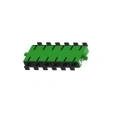
Indoor optical cables have become an integral part of medical equipment networking, providing reliable and efficient connectivity solutions. This article aims to analyze the application case of indoor optical cables in medical equipment networking, demonstrating their significance and effectiveness.
The Role of Indoor Optical Cable in Medical Equipment Networking
Indoor optical cables play a critical role in medical equipment networking by ensuring seamless communication and data transfer. With advancements in medical technology, the need for high-speed and reliable connectivity has increased significantly. Indoor optical cables provide the necessary infrastructure to connect various medical devices, ensuring a smooth flow of information.
Moreover, these cables offer high bandwidth capabilities, allowing simultaneous transmission of large amounts of data. This is particularly useful in medical settings where multiple devices, such as imaging systems, patient monitors, and laboratory equipment, need to exchange information swiftly. The use of indoor optical cables minimizes data transfer delays, contributing to the efficiency of medical procedures.
Technical Advantages of Indoor Optical Cables in Medical Equipment Networking
Indoor optical cables offer several technical advantages that make them ideal for medical equipment networking:
1. Increased Bandwidth:
Indoor optical cables provide higher bandwidth compared to traditional copper cables. This allows for the transmission of large data files, such as high-resolution medical images and real-time video streams, without compromising the speed and quality of the network.
2. Immunity to Interference:
Unlike copper cables, indoor optical cables are immune to electromagnetic interference, ensuring a stable and reliable network connection. This is particularly crucial in medical facilities where various electronic devices and equipment can generate electromagnetic noise that may disrupt the network.
3. Long Transmission Distance:
Indoor optical cables can transmit data over long distances without signal degradation. This is advantageous in large medical facilities where equipment may be dispersed across different rooms or floors. The use of indoor optical cables ensures consistent and uninterrupted connectivity throughout the facility.
Conclusion
The application case analysis highlights the significant role of indoor optical cables in medical equipment networking. Their technical advantages, including increased bandwidth, immunity to interference, and long transmission distances, contribute to the efficient functioning of medical facilities. Embracing indoor optical cables in medical equipment networking is a crucial step towards enhanced connectivity, facilitating effective communication and data transfer in healthcare settings.



